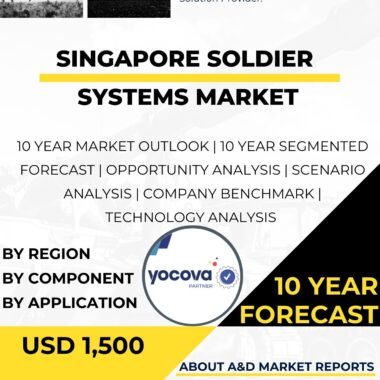Description
Japan soldier systems market has gained strong momentum as the country works to modernize its armed forces. Soldier systems combine equipment, gear, and digital technologies that support individual troops in the field. As a result, these systems improve mobility, protection, and awareness. They also help Japan ensure that its soldiers remain effective across diverse operational environments.
Japan Soldier Systems Market Scope and Components
The Japan soldier systems market covers a wide range of solutions used by the JGSDF, JMSDF, and JASDF. These include personal protective equipment, communication devices, night vision systems, weapons accessories, and wearable technologies. Together, these components create an integrated system that supports soldiers during both combat and non-combat missions.
Japan Soldier Systems Market Role in Mobility and Readiness
The Japan soldier systems market strongly supports troop mobility and operational readiness. Modern systems use lightweight and modular designs. Therefore, soldiers can move faster and operate longer with less fatigue. Load-bearing gear, improved backpacks, and ergonomic body armor help distribute weight evenly and reduce physical strain during extended missions.
Japan Soldier Systems Market Focus on Protection and Survivability
The Japan soldier systems market places high importance on troop protection. Advanced helmets and body armor provide better defense against ballistic threats and battlefield hazards. In addition, integrated medical and trauma kits allow soldiers to deliver immediate care. As a result, survivability improves during high-risk operations.
Japan Soldier Systems Market and Situational Awareness
The Japan soldier systems market also enhances situational awareness and communication. Digital radios, wearable displays, and rugged tablets give soldiers real-time access to mission data. Moreover, these tools support secure communication between units. Consequently, troops can coordinate faster and make informed decisions in complex environments.
Japan Soldier Systems Market Indigenous Development
The Japan soldier systems market benefits from strong domestic development efforts. Government agencies work closely with local defense firms and research institutions. This cooperation encourages innovation and ensures systems meet national requirements. Over time, indigenous production has improved reliability and reduced dependence on foreign suppliers.
Japan Soldier Systems Market and Allied Cooperation
The Japan soldier systems market is further strengthened through cooperation with allies, especially the United States. Through joint programs and technology sharing, Japan gains access to advanced soldier technologies. At the same time, this cooperation improves interoperability during joint operations and exercises.
Japan Soldier Systems Market Technology Trends
The Japan soldier systems market continues to evolve with advances in materials and digital technology. Lighter composites, improved batteries, and better human-machine interfaces enhance comfort and performance. In addition, wearable systems are becoming more intuitive, which reduces training time and improves field usability.
Japan Market Challenges
Despite progress, the Japan soldier systems market faces challenges. High development costs require careful budgeting. Furthermore, system complexity can affect ease of use. Cybersecurity is another concern, as connected systems must protect sensitive data from digital threats.
Japan Market Outlook
In conclusion, the Japan soldier systems market plays a vital role in strengthening troop effectiveness and safety. Through domestic innovation, allied cooperation, and steady technology upgrades, Japan continues to enhance its soldier capabilities. Ultimately, advanced soldier systems support national defense goals and contribute to regional and global security.




